Congratulations to Tom Cee who correctly identified last week’s “What Is It!” on Facebook. This delicate spring flower is the lovely wood anemone, Anemone quinquefolia. 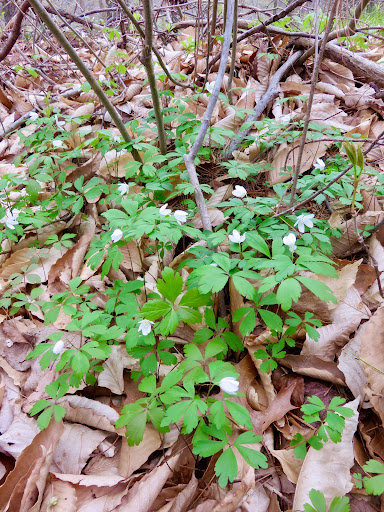 Hanover, MA, April 29, 2023 Just three inches tall, this plant has a whorl of dissected leaves and a single white flower. It is, according to the Native Plant Trust, “one of the earliest blooming flowers in the rich, moist forests of New England.” Notice that the flowers of this species usually have five petal-like sepals, while its European counterpart, Anemone nemerosa, has 6 or 7. Both are called “windflowers.” Our reader Sylvia Krammer shared the plant’s descriptive German name, “Buschwindröschen.”
Hanover, MA, April 29, 2023 Just three inches tall, this plant has a whorl of dissected leaves and a single white flower. It is, according to the Native Plant Trust, “one of the earliest blooming flowers in the rich, moist forests of New England.” Notice that the flowers of this species usually have five petal-like sepals, while its European counterpart, Anemone nemerosa, has 6 or 7. Both are called “windflowers.” Our reader Sylvia Krammer shared the plant’s descriptive German name, “Buschwindröschen.”
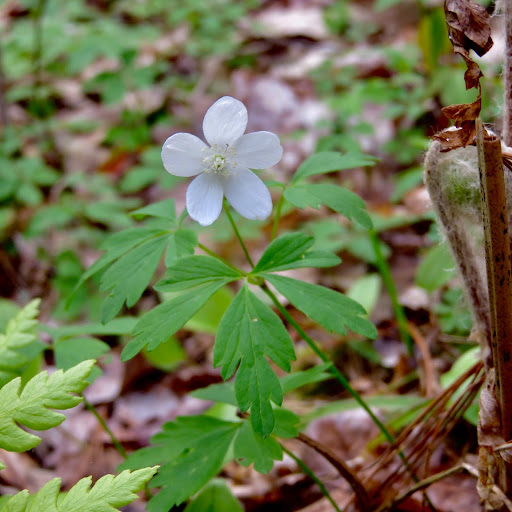
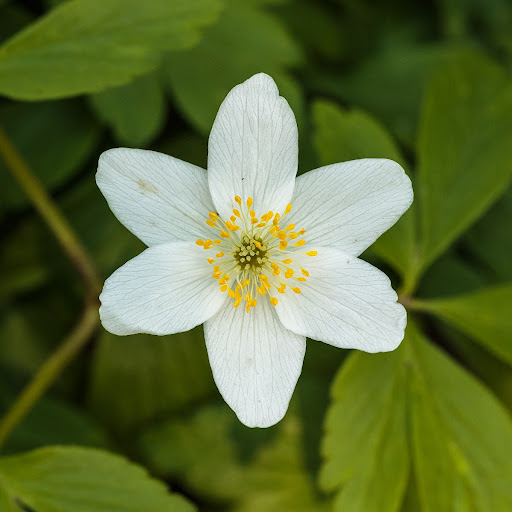
Anemone quinquefolia Pembroke, MA, May 12, 2021 Anemone nemerosa Nederlands, April 8, 2019 Dominicus Johannes Bergsma, CC BY-SA 4.0 Early-blooming perennials like the wood anemone avoid competition for light by growing and reproducing before the forest trees leaf out. They complete their growing season before many people even get outdoors! As the Lady Bird Johnson Wildflower Center phrases it, the plant “Disappears after blooming.” The roots and rhizomes remain, but the above-ground parts that attract human admirers fade away. Botanists refer to such short-season plants as “spring ephemerals.” This strategy serves the plant well and it benefits insects who need food when they emerge. I have been surprised at how often I see tiny pollinators when I examine early-spring flowers. If you look closer, you may get two species for the price of one. There is still time to see wood anemones this year – if you don’t dally. Bristol County observers began reporting them in mid-April. My best sightings have been in floodplains of rivers and their tributaries, not directly on the banks, but within the influence of a river system. Wood anemones need moist, humus-rich soil and some shade. They like what Prairie Moon Nursery calls “a healthy woodland floor,” which in my experience means minimal disruption from plows or trampling. Even in a good location, their rhizomes (underground stems) spread slowly. As Minnesota Wildflowers notes, “A single plant may take 5 years or longer to flower, so often only a few flowers are seen among the leaves.” Consider yourself fortunate if you find a large patch. Last weekend I made my annual wildflower sojourn, a three-day, three-state extravaganza of blossoms. When I finish editing, sorting, identifying, and labeling the 400+ images, I’ll share some with you. Until then, here is an assortment of little white flowers that bloom early and grow in Southeastern Massachusetts. Some are common; others, less so. See how many of these you can spot on your woodland walks. Do they still have flowers? Pollinators? Maybe fruit? In any case, you’ll be better prepared for next spring’s festival of bloom. 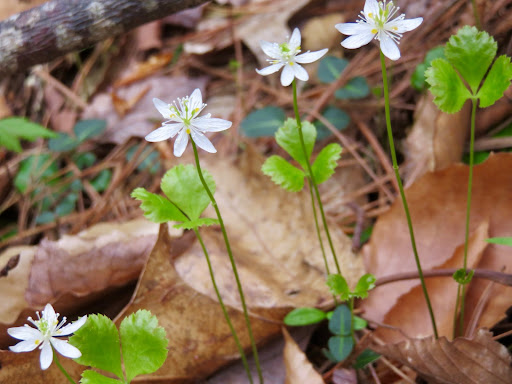 Three-leaf Goldthread, Hanover, MA, April 29, 2023
Three-leaf Goldthread, Hanover, MA, April 29, 2023 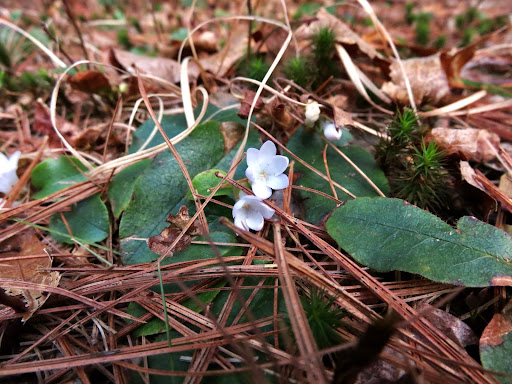 Mayflower, Pembroke, MA, April 13, 2023
Mayflower, Pembroke, MA, April 13, 2023 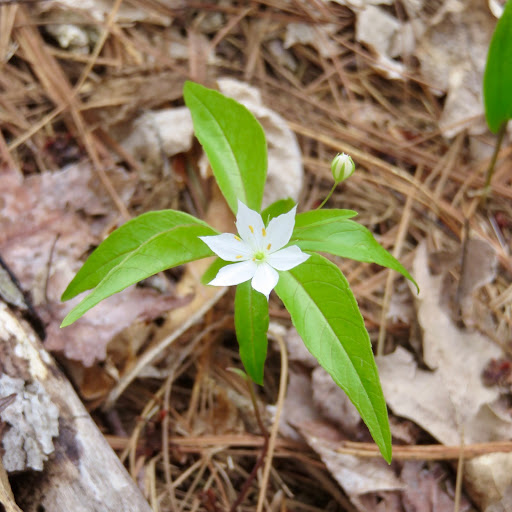 Northern Starflower, Pembroke, MA, April 29, 2023
Northern Starflower, Pembroke, MA, April 29, 2023 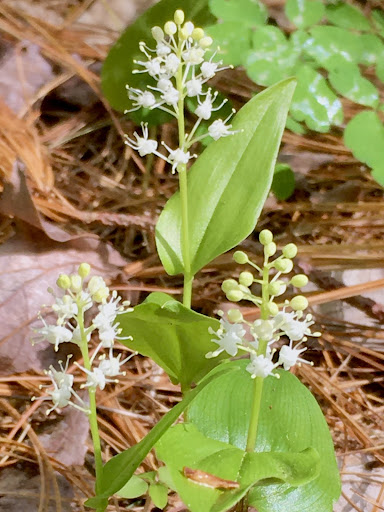 Canada Mayflower, Hanson, MA, May 16, 2021
Canada Mayflower, Hanson, MA, May 16, 2021
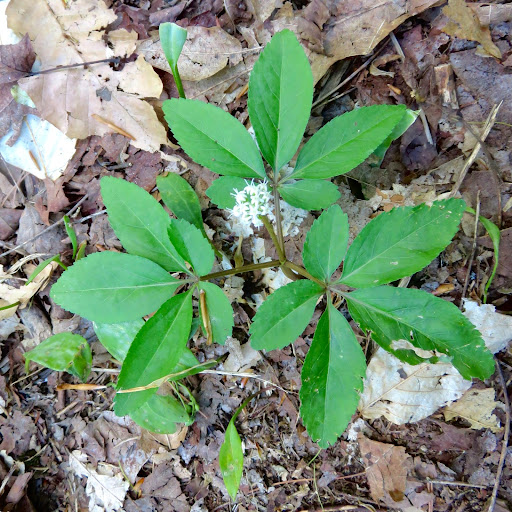 Dwarf Ginseng, Barkhamsted, CT, May 6, 2023
Dwarf Ginseng, Barkhamsted, CT, May 6, 2023
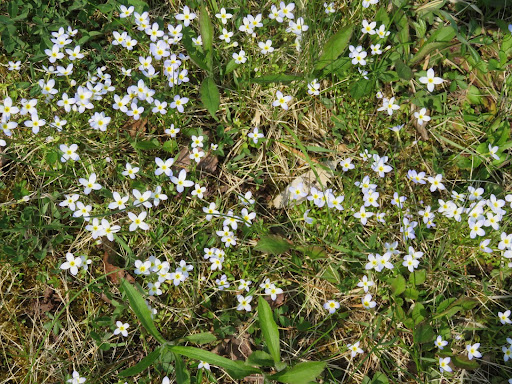 Azure Bluets, Sheffield, MA, May 8, 2023
Azure Bluets, Sheffield, MA, May 8, 2023
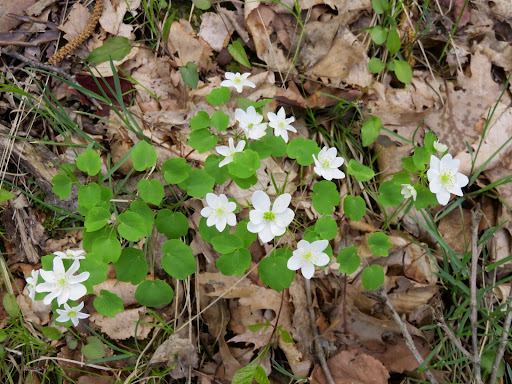 Rue Anemone, Pine Plains, NY, May 7, 2023
Rue Anemone, Pine Plains, NY, May 7, 2023